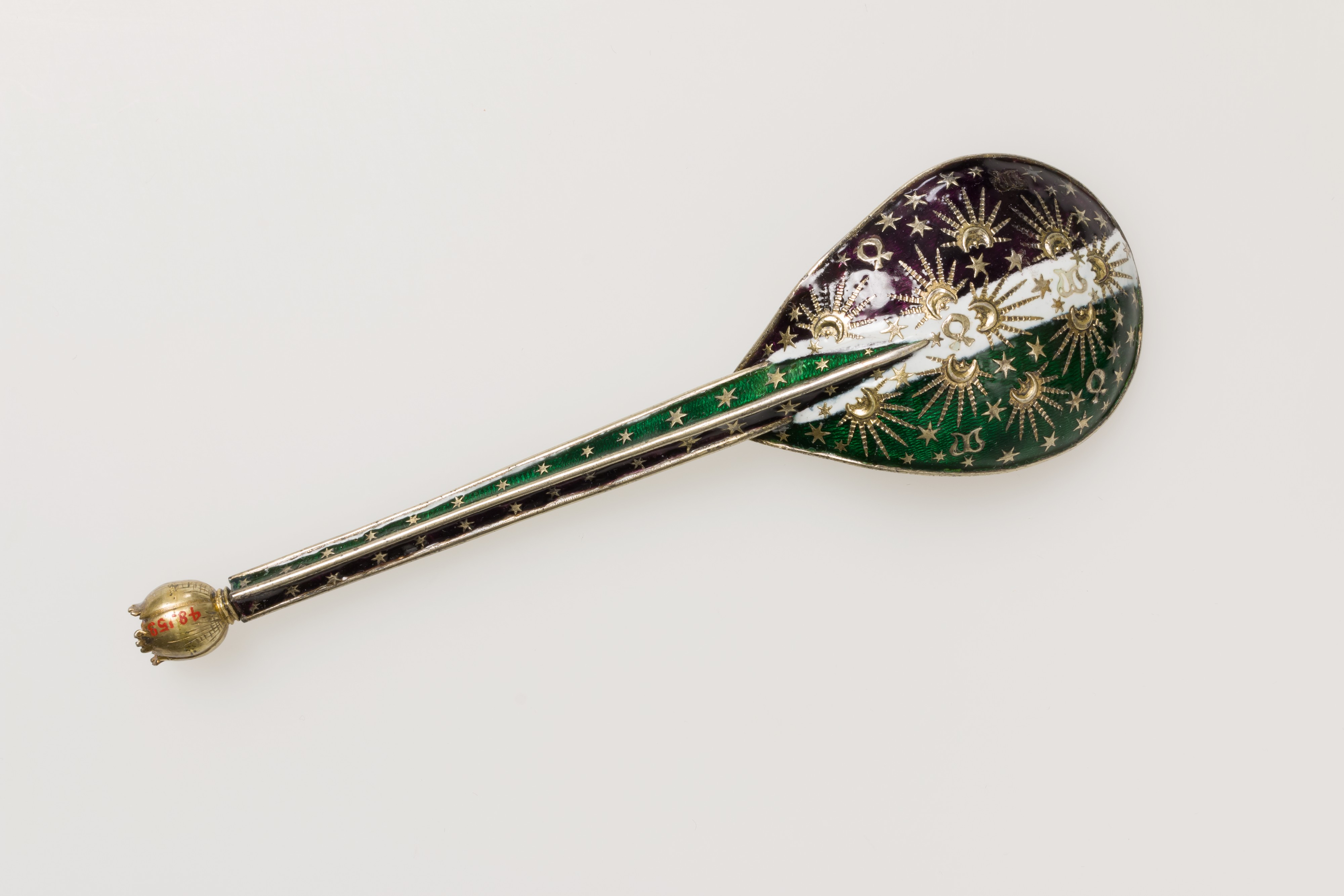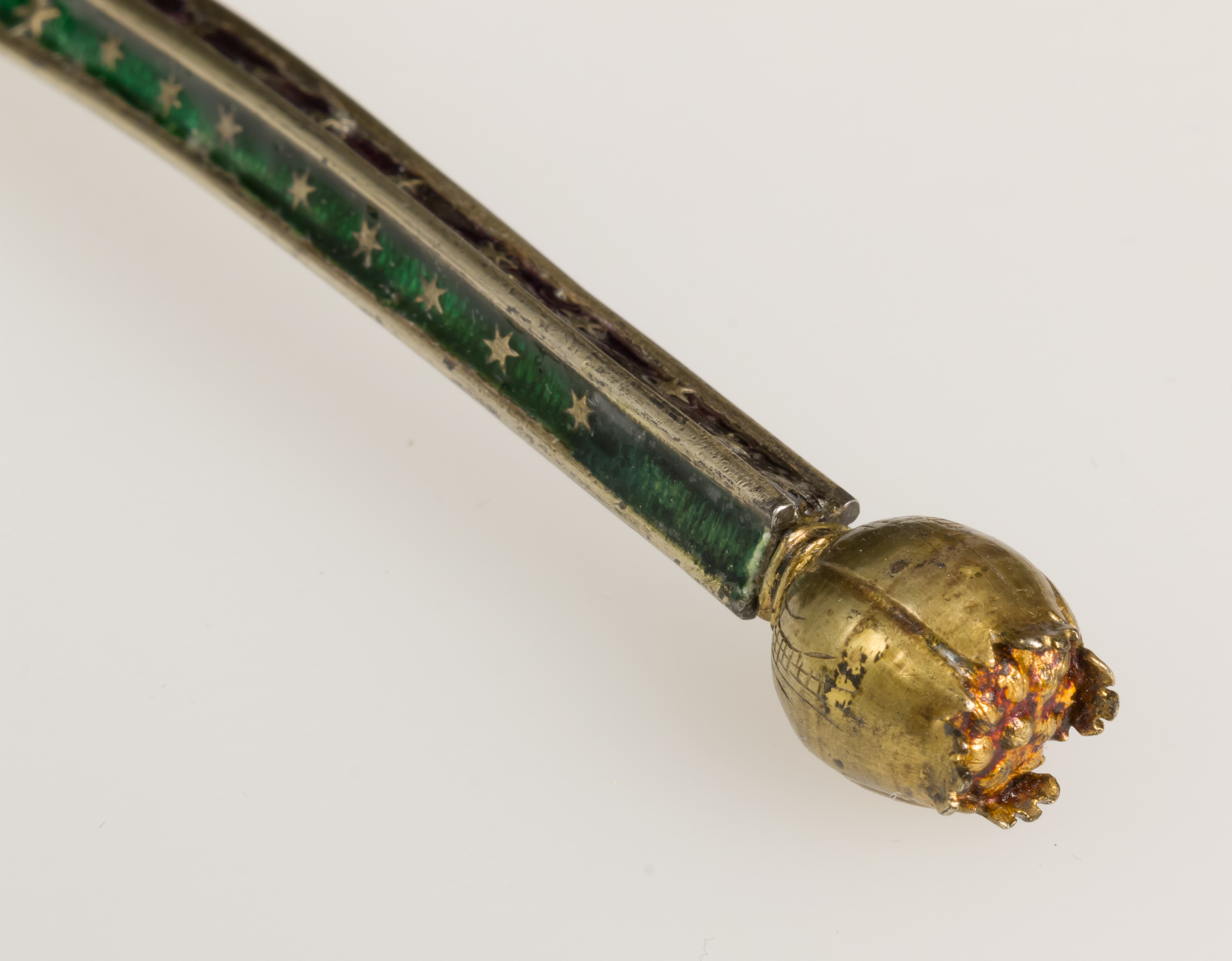Spoon
The elaborateness of design and high quality of workmanship, as well as the preciousness of the materials, of this spoon indicate with certainty that it belonged to a person of rank. Unfortunately, neither the motifs nor the color scheme have been successfully associated with a particular family. This spoon, surmounted by a pomegranate finial, is executed in translucent green and purple enamel, separated by a band of white enamel, into which are impressed silver-gilt motifs: floral tracery, stars, radiant crescents, and pairs of ornamental symbols (possibly undeciphered initials).
The technique of impressing enamel with metallic ornament links the spoon to a group of objects, which have pomegranate finials and gold stars impressed in the enamel. The beakers in this series have been associated with the painted enamel technique thought to have been developed in the Netherlands in the second quarter of the fifteenth century, though it has also been suggested that they may have been produced in Germany, possibly the Rhineland, for the Venetian market, or in Venice itself. The problem of the origins of several innovative fifteenth-century enamel techniques, including that employed on this spoon, remains controversial.
This image cannot be enlarged, viewed at full screen, or downloaded.
This artwork is meant to be viewed from right to left. Scroll left to view more.





